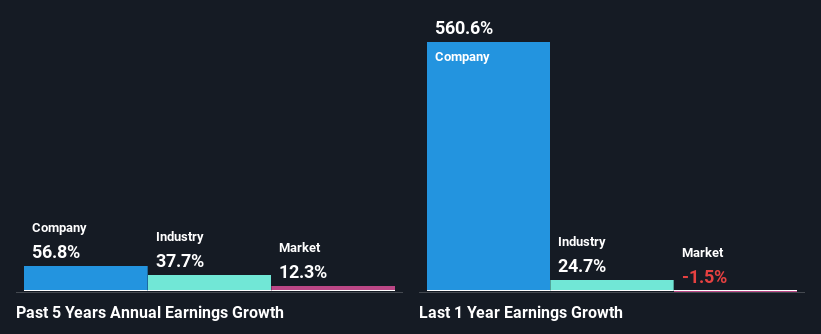Is Drax Group plc's (LON:DRX) Recent Stock Performance Tethered To Its Strong Fundamentals?
Drax Group (LON:DRX) has had a great run on the share market with its stock up by a significant 11% over the last week. Given that the market rewards strong financials in the long-term, we wonder if that is the case in this instance. Specifically, we decided to study Drax Group's ROE in this article.
Return on Equity or ROE is a test of how effectively a company is growing its value and managing investors’ money. In simpler terms, it measures the profitability of a company in relation to shareholder's equity.
See our latest analysis for Drax Group
How Do You Calculate Return On Equity?
The formula for ROE is:
Return on Equity = Net Profit (from continuing operations) ÷ Shareholders' Equity
So, based on the above formula, the ROE for Drax Group is:
28% = UK£561m ÷ UK£2.0b (Based on the trailing twelve months to December 2023).
The 'return' is the profit over the last twelve months. So, this means that for every £1 of its shareholder's investments, the company generates a profit of £0.28.
What Has ROE Got To Do With Earnings Growth?
Thus far, we have learned that ROE measures how efficiently a company is generating its profits. Based on how much of its profits the company chooses to reinvest or "retain", we are then able to evaluate a company's future ability to generate profits. Generally speaking, other things being equal, firms with a high return on equity and profit retention, have a higher growth rate than firms that don’t share these attributes.
A Side By Side comparison of Drax Group's Earnings Growth And 28% ROE
Firstly, we acknowledge that Drax Group has a significantly high ROE. Secondly, even when compared to the industry average of 9.8% the company's ROE is quite impressive. As a result, Drax Group's exceptional 57% net income growth seen over the past five years, doesn't come as a surprise.
Next, on comparing with the industry net income growth, we found that Drax Group's growth is quite high when compared to the industry average growth of 38% in the same period, which is great to see.
Earnings growth is a huge factor in stock valuation. What investors need to determine next is if the expected earnings growth, or the lack of it, is already built into the share price. Doing so will help them establish if the stock's future looks promising or ominous. Is Drax Group fairly valued compared to other companies? These 3 valuation measures might help you decide.
Is Drax Group Using Its Retained Earnings Effectively?
Drax Group's three-year median payout ratio is a pretty moderate 37%, meaning the company retains 63% of its income. By the looks of it, the dividend is well covered and Drax Group is reinvesting its profits efficiently as evidenced by its exceptional growth which we discussed above.
Besides, Drax Group has been paying dividends for at least ten years or more. This shows that the company is committed to sharing profits with its shareholders. Upon studying the latest analysts' consensus data, we found that the company is expected to keep paying out approximately 39% of its profits over the next three years. Still, forecasts suggest that Drax Group's future ROE will drop to 21% even though the the company's payout ratio is not expected to change by much.
Conclusion
In total, we are pretty happy with Drax Group's performance. Specifically, we like that the company is reinvesting a huge chunk of its profits at a high rate of return. This of course has caused the company to see substantial growth in its earnings. Having said that, on studying current analyst estimates, we were concerned to see that while the company has grown its earnings in the past, analysts expect its earnings to shrink in the future. To know more about the latest analysts predictions for the company, check out this visualization of analyst forecasts for the company.
Have feedback on this article? Concerned about the content? Get in touch with us directly. Alternatively, email editorial-team (at) simplywallst.com.
This article by Simply Wall St is general in nature. We provide commentary based on historical data and analyst forecasts only using an unbiased methodology and our articles are not intended to be financial advice. It does not constitute a recommendation to buy or sell any stock, and does not take account of your objectives, or your financial situation. We aim to bring you long-term focused analysis driven by fundamental data. Note that our analysis may not factor in the latest price-sensitive company announcements or qualitative material. Simply Wall St has no position in any stocks mentioned.

 Yahoo Finance
Yahoo Finance 
